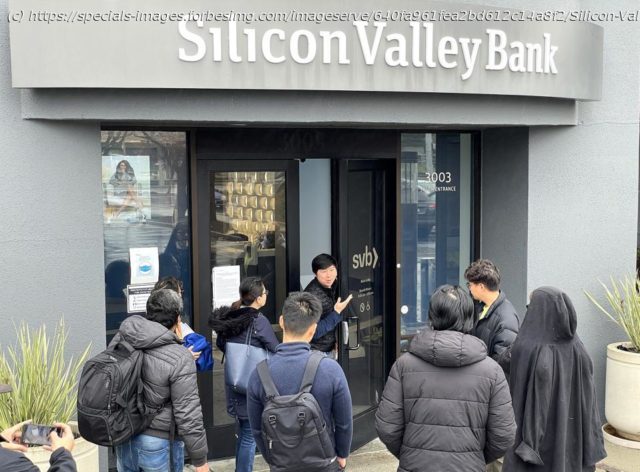The Biden administration announced late Sunday, including via a Federal Reserve press release and a joint press release by Treasury, the Fed and the FDIC, that all depositors at Silicon Valley Bank (SVB) would be able to access to all their money on Monday, March 13.
Four Ways to Protect Small Businesses
Silicon Valley Bank’s (SVB) sudden failure is the second biggest bank collapse in U.S. history, by what was the 16th largest bank in the U.S. As its name implies, the institution catered to the tech sector, which has had a bumpy start to 2023. On Friday, the Federal Deposit Insurance Corporation (FDIC) took control of the bank’s assets. The bank’s receivership not only creates risk for small and midsized banks like SVB, but also for their largely small business customers that form the core of such banks’ clientele.
The Biden administration announced late Sunday, including via a Federal Reserve press release and a joint press release by the Treasury, the Fed, and the FDIC, that all depositors at Silicon Valley Bank (SVB) would be able to access to all their money on Monday, March 13. President Biden confirmed this announcement in an early morning address, and also indicated that the same protections would extend to depositors of Signature Bank. In order to provide liquidity and eliminate the need to sell stock at low prices to shore up balance sheets, the Fed also announced the creation of a new Bank Term Funding Program (BTFP) to eligible financial institutions that pledge qualifying assets as collateral. The BFTP is backed by up to $25 billion from the Exchange Stabilization Fund.
The key takeaways are that: (1) all depositors at these financial institutions, even those above the FDIC-insured limit of $250,000, would be protected and have immediate access to their money; (2) the new BTFP was created to provide much-needed liquidity to affected financial institutions; and (3) the Federal Reserve discount window, which lends money to depository institutions secured by a wide range of collateral, remains open and will apply the same margins used for the securities eligible for the BTFP. This is all very good news for companies in the tech sector that need to make payroll by March 15 and would not have been able to do so without timely access their accounts.
These moves constitute an unusual “systemic risk” intervention aimed to avert a crisis in the financial system by taking control of the affected banks and protecting depositors. Further, under these programs, bank equity and debt holders, together with bank management, would not be protected, and no losses associated with the resolution of SVB will be borne by the taxpayer. In this way, the recent government moves are very different from the 2008 bank “bailouts” that were widely criticized for rewarding bank management and making taxpayers foot the bill. Senior management of SVB has also been removed. Any losses to the Deposit Insurance Fund to support uninsured depositors will be recovered by a special assessment on banks, as required by law.
Silicon Valley Bank’s spiral began on Wednesday of last week when it surprised investors by reporting in an SEC filing that it needed to raise $2.25 billion to shore up its balance sheet.
SVB’s clientele featured a high concentration of tech companies, making it unique among banks of similar size. Other midsized banks have a more diverse client base and cater to businesses of all types, such as restaurants, hotels, retail, manufacturing, and shipping.
Домой
United States
USA — Financial SVB’s Collapse Could Also Create Big Problems For Small Businesses






